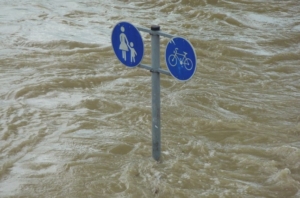Natural disasters are becoming more regular and more intense. Thousands of lives have been lost over the last several years and trillions of dollars have been spent on the accumulated damage. The growing cost of coping and dealing with the aftermath of weather events has made one thing abundantly clear – investing in resilience makes good financial sense.
A recent study by the National Institute of Building Sciences revealed that for every $1 spent on resilience and mitigation projects at least $6 is saved because future losses are significantly lessened.
Because natural disasters are unpredictable and varied, damages impact every segment of U.S. infrastructure. Future devastation that can be predicted is staggering. Because of that, funding to deliver resilient infrastructure is now available from numerous divisions of the federal government.
One of the major sources of funding is available now through the Department of Defense’s Readiness and Environmental Protection Integration (REPI) program. It supports resilience-oriented partnerships between the federal government, local governments and community stakeholders. Congress recently expanded the grant funding program to include support for projects involving natural infrastructure solutions such as wildfire mitigation and coastal resilience projects.

The Federal Highway Administration (FHWA) is another agency with funding for projects that improve resilience of transportation assets. The agency’s Promoting Resilient Operations for Transformative, Efficient and Cost-Saving Transportation program makes the awards. Approximately $900 million has already been allocated for projects between 2024 and 2026. The funding marks a $50 million annual increase in the program’s investment account.
The USDOT’s 10 Regional Centers of Excellence have funding for resilience projects. The centers award funding to advance research and development that are designed to improve resilience. Most of the grants will support resiliency related to surface transportation infrastructure. There will be $100 million available each year from 20222 through 2026.
The Department of Agriculture’s new Rural Energy for America Program (REAP) was funded at the end of 2022. The program awards billions of dollars through grants and guaranteed loans each year. The first round of allocations was awarded to projects designed to reduce climate pollution and increase resilience to weather-related damages.
The Department of the Interior (DOI) is apportioning funds authorized through the Inflation Reduction Act (IRA) to various coastal resilience projects. Between now and 2026, the DOI will invest $120 million in projects that either promote coastal resilience directly or fund data collection processes that will guide more precise, nature-based resilience measures in the future.
The Department of Commerce will provide funding for resilience upgrades through the National Oceanic and Atmospheric Administration program. The agency will disburse $3 billion over five years for projects that address flood, fire, drought and/or extreme heat in key impact areas. Roughly half of that funding will focus on high-impact natural infrastructure projects to improve the resilience of coastal communities.
Westbrook, Conn., will engage the services of a private planning/engineering firm for guidance to bolster resilience along the nearby Atlantic coastline. The city of Tybee Island, Ga., will also seek a consultant to help develop a resilience strategy for the state’s Atlantic coastline.
For cities in California, state support will dramatically expand funding for resilience projects. Earlier this month, a bill was introduced in the California State Senate to authorize a $6 billion bond issue to fund flood protection and climate resilience projects. A plan is already underway in Alameda and a request for proposals for technical consultants will be issued this summer. Construction on the initial phase of projects could begin as early as 2024.
The city of Providence, R.I., will launch a resilience project to reclaim a critical infrastructure asset from the effects of severe flooding. The project will focus on climatic challenges to both the Riverwalk and Waterplace Park—two public spaces in downtown Providence. The projects will include pedestrian tunnels that have become virtually inaccessible because of flooding. City leaders plan to launch the project’s engineering phase this year.
Concerns about seismic activity compel resilience planning in states like Oregon. Officials in Multnomah County are about to launch a resilience project for the Burnside Bridge. A project cost of $895 million is anticipated. The bridge, which is part of a regionally established evacuation route, must be capable of supporting multi-model travel across the Willamette River in the aftermath of major earthquakes.
Officials in New York will oversee a $229 million project to enhance resilience along part of the city’s shoreline that stretches from a large public park to the Brooklyn Bridge. The project will involve elevating the current shoreline by an additional three to five feet to address climate risks stemming from sea level rise. The New York City Economic Development Corporation will manage the project and an initial design is currently being scaled to include features such as esplanade improvements, ecological enhancements and nature-based stormwater management solutions.
These types of projects are being announced throughout America. Bridge construction and renovation cannot be complete without a call for many additional services, including technology. Now is the time when interested companies should be getting positioned with decision-makers and selecting local subcontracting partners.






